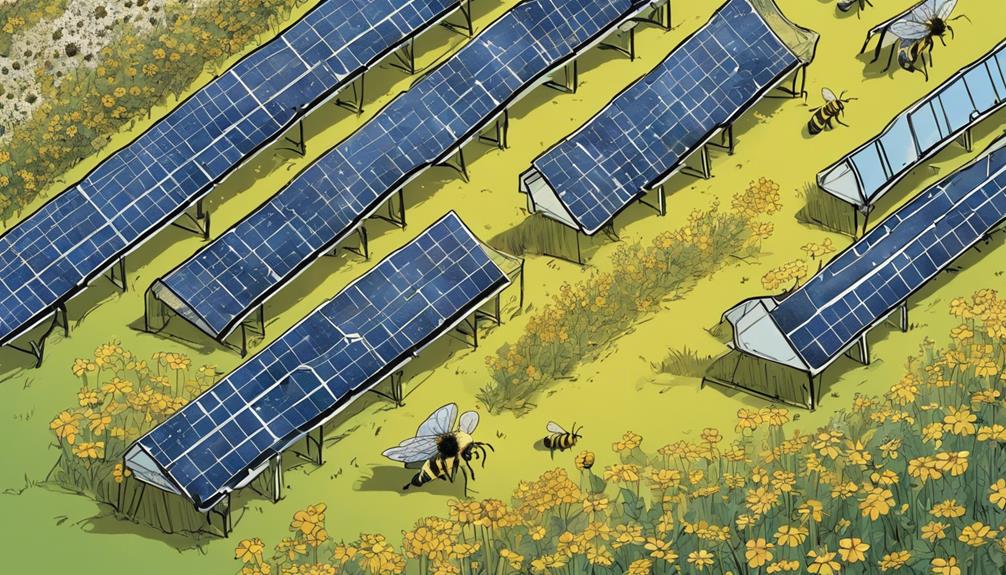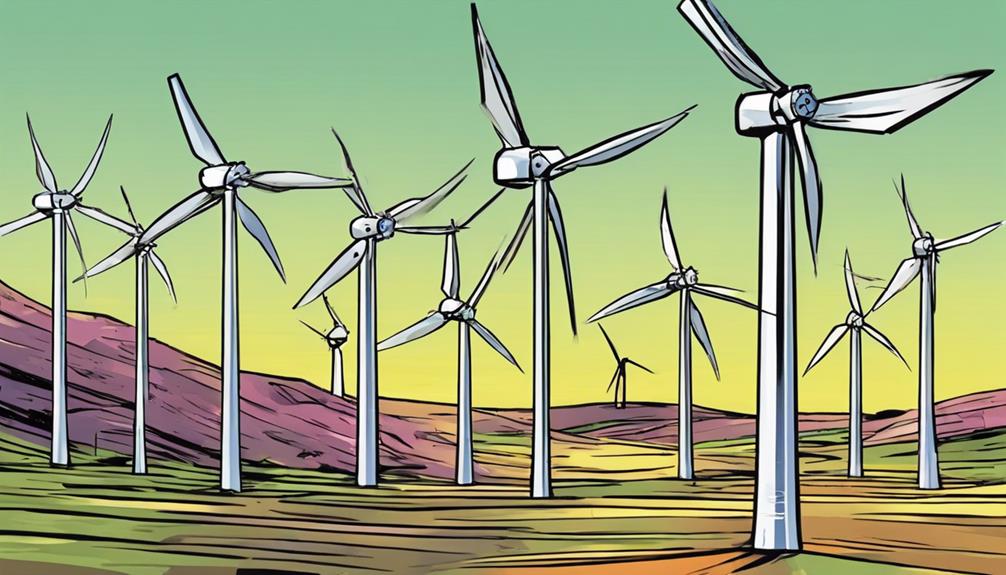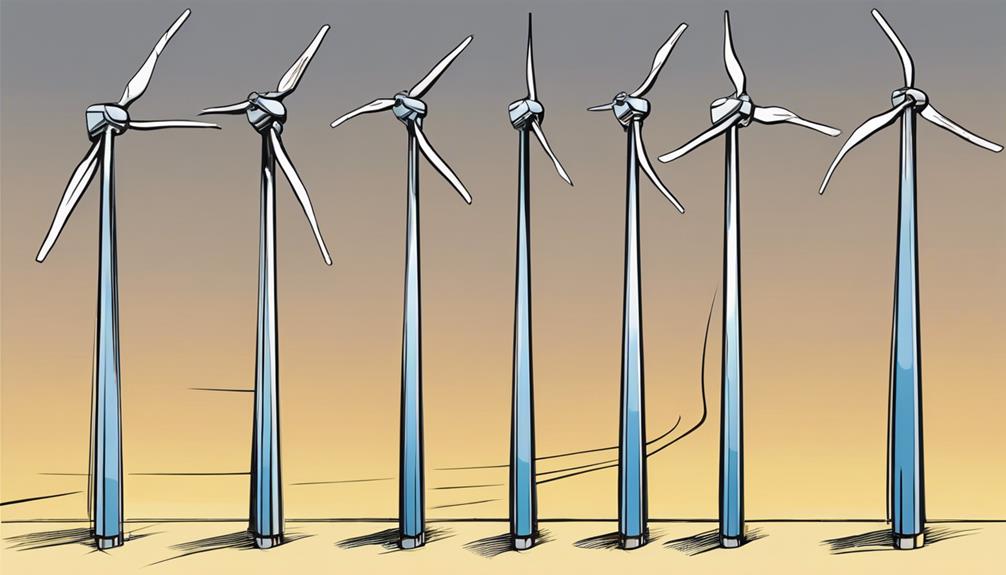As I delve into the world of solar farms, I've come to realize that enhancing efficiency is key to accessing the full potential of renewable energy. To maximize ROI, it's essential to estimate revenue accurately, leverage government incentives, and design farms efficiently. Proper maintenance and panel selection are also crucial. But it's not just about the bottom line – solar farms have a significant social and environmental impact, from reducing emissions to creating jobs. By understanding these factors, I'm confident that I can uncover the best strategies to revolutionize solar farm efficiency. Now, let's get into the nitty-gritty details that will take my understanding to the next level.
Key Takeaways
- Careful planning and optimal layout strategies maximize energy output and boost ROI in solar farms.
- Efficient wiring and advanced monitoring systems enhance energy production and reduce maintenance costs.
- Government incentives like tax credits, grants, and net metering policies significantly impact ROI and promote efficient design.
- Technological advancements in panel orientation, spacing, and tracking systems increase energy output and reduce costs.
- Evaluating sunlight availability, shading factors, and historical weather data optimizes panel selection for energy generation.
Solar Farm ROI Considerations
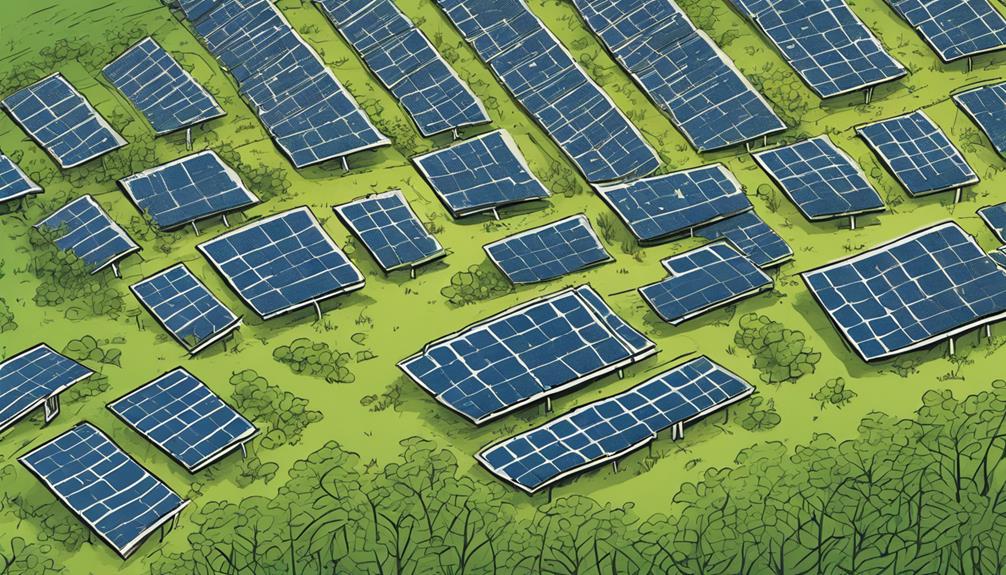
What're the key factors that influence the return on investment (ROI) of a solar farm, and how can we accurately estimate revenue and maximize incentives to guarantee a profitable venture?
As I explore the world of solar farms, I've come to realize that accurate revenue estimation and incentives are essential for a successful ROI analysis. Government incentive programs have a significant impact on solar farm ROI, and understanding factors like initial investment, operating expenses, and revenue is vital for calculation.
Staying updated on government incentives is key to maximizing ROI. Long-term performance evaluation and maintenance cost assessment are also critical for determining overall ROI. By considering these factors, we can ensure a profitable solar farm venture that benefits both the environment and our bottom line.
Efficient Solar Farm Design
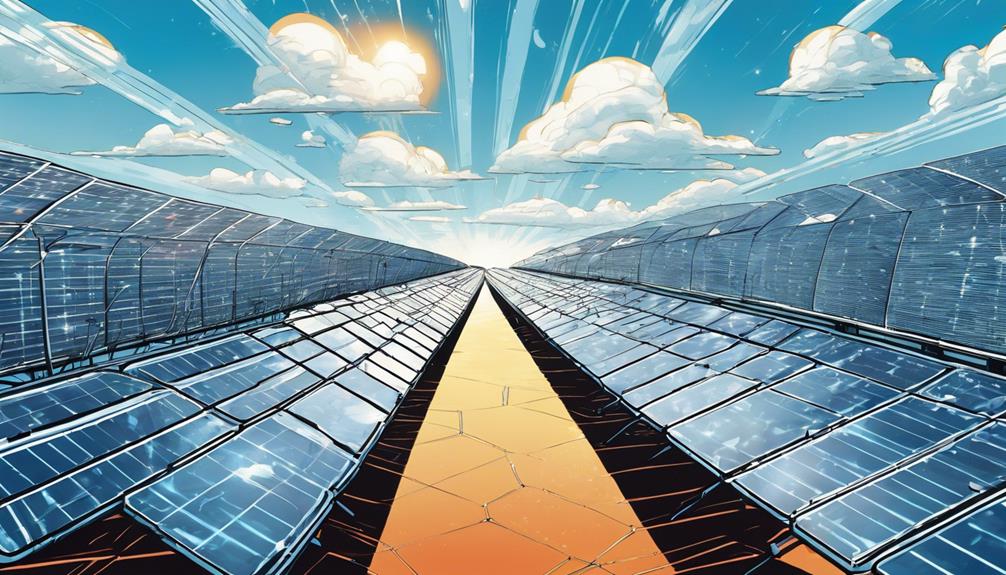
Designing an efficient solar farm demands careful planning, incorporating best layout strategies, efficient wiring, and advanced monitoring systems to maximize energy output and ultimately boost ROI. I've learned that best layout planning is crucial, considering factors like panel orientation, spacing, and tracking systems to ensure higher efficiency.
Additionally, technological advancements like smart grid integration, energy storage, and advanced software can greatly enhance energy production. By implementing efficient design practices, I can optimize performance, reduce losses, and increase revenue.
Advanced monitoring systems, battery storage solutions, and improved inverters also play a pivotal role in maximizing energy output. By incorporating these strategies, I can create a highly efficient solar farm that generates more power and drives greater returns on investment.
Government Incentives Matter
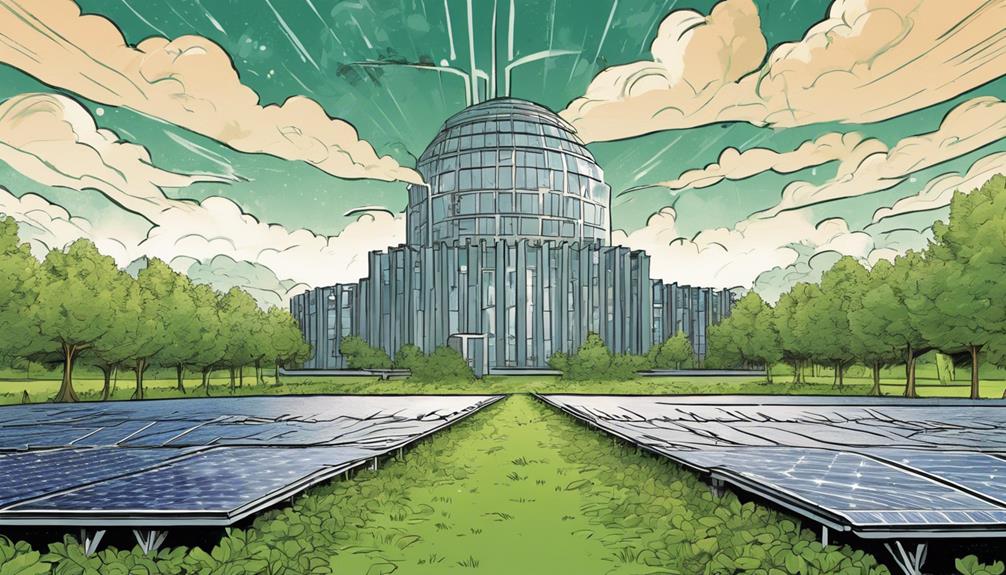
As I explore the world of solar farm development, I've come to realize that government incentives play a pivotal role in determining the viability and profitability of my projects.
These incentives can make or break a project, and it's crucial to stay updated on the various programs available.
- Tax credits and grants can greatly reduce the initial investment cost, making solar farms more attractive to investors.
- Net metering policies allow me to sell excess energy back to the grid, generating additional revenue streams.
- Renewable energy certificates (RECs) provide a fixed price for solar energy production, ensuring a stable income.
- Feed-in tariffs offer a fixed rate for solar energy sold to the grid, providing a predictable revenue stream.
- Government support creates a favorable market environment, promoting efficient solar farm design and technology adoption.
Social and Environmental Impact

As I explore the realm of solar farm development, I ask myself: How can I, as a solar farm developer, maximize the positive social and environmental impacts of my projects, while minimizing their footprints?
The answer lies in understanding the far-reaching benefits of solar energy adoption. By shifting to renewable energy, I can reduce greenhouse gas emissions, create job opportunities, and empower communities. This, in turn, improves the quality of life, provides reliable electricity, and bridges the energy access gap.
Additionally, monthly electricity bills decrease noticeably, contributing to economic growth and community empowerment. By prioritizing social and environmental considerations, I can create a sustainable and responsible solar farm that benefits both people and the planet.
Solar Panel Selection Tips
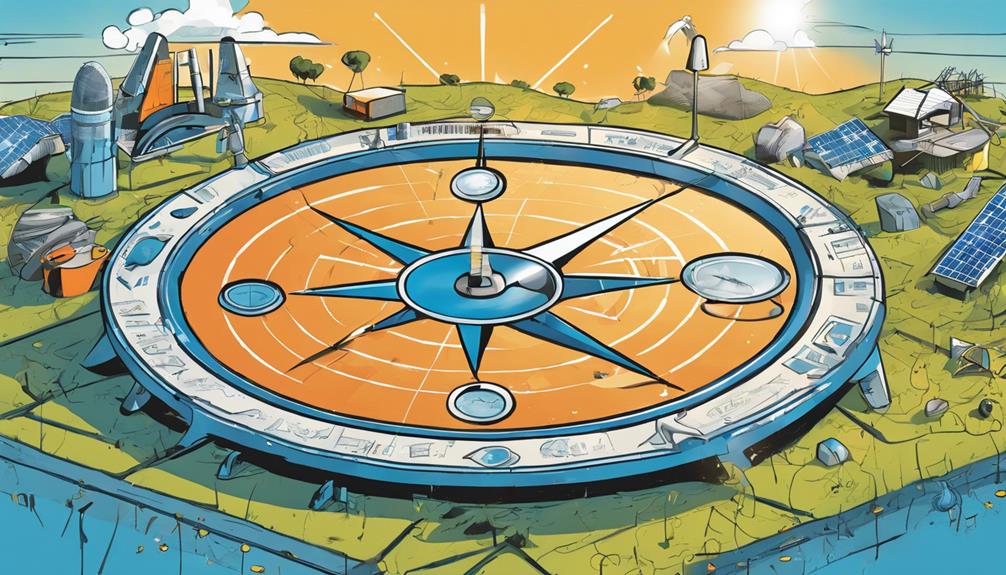
When selecting solar panels for my farm, I prioritize effectiveness, cost-efficiency, durability, warranty, and compatibility with the layout to maximize energy output and achieve the best ROI.
It's vital to ponder factors that impact energy generation and minimize potential losses. Here are some key aspects I keep in mind:
- Effectiveness ratings: Higher efficiency ratings translate to more energy output per unit area.
- Sunlight availability: Evaluating local sunlight conditions helps determine the ideal panel number and layout.
- Shading factors: Identifying potential shading areas ensures ideal panel placement.
- Warranty and durability: A longer warranty and sturdy panels reduce maintenance costs and secure consistent energy output.
- Historical weather data: Analyzing weather patterns helps optimize panel selection for maximum energy generation.
Maximize Energy Output Strategies

I enhance my solar farm's energy output by implementing efficient layout planning, smart grid integration, and advanced monitoring systems to minimize losses and maximize energy production.
These strategies enable me to identify and address potential issues promptly, ensuring peak performance. I also utilize automated cleaning systems and predictive analytics to maintain top efficiency.
Additionally, I prioritize regular maintenance, including inspecting and cleaning panels, to prevent energy losses. By leveraging these strategies, I'm able to increase my solar farm's energy output, leading to higher returns on investment and a reduced carbon footprint.
Performance Evaluation Essentials

Accurate performance assessment is crucial in determining my solar farm's overall efficiency and identifying areas for enhancement. To guarantee maximum ROI, I need to evaluate my farm's performance regularly. This includes monitoring energy output, tracking weather patterns, and analyzing maintenance costs. By carrying out these tasks, I can identify issues, optimize energy production, and decrease downtime.
Here are some essential performance evaluation metrics I consider:
- Energy output vs. anticipated output
- Downtime and upkeep expenses
- Weather patterns and their influence on energy production
- Inverter performance and effectiveness
- Panel cleaning and maintenance schedules
Frequently Asked Questions
What Is the Ideal Land Size for a Solar Farm to Be Profitable?
When it comes to determining the ideal land size for a profitable solar farm, I consider factors like energy output goals, local regulations, and panel efficiency. Typically, 5-10 acres per megawatt is a good starting point.
How Do I Ensure Consistent Energy Output During Varying Weather Conditions?
"As the weather forecast turns cloudy, I shield my solar farm from uncertainty by harnessing the power of technology. I utilize advanced monitoring systems and predictive analytics to optimize energy output, ensuring a steady stream of power despite Mother Nature's mood swings."
Can Solar Farms Be Integrated With Existing Agricultural Operations?
Yeah, I've seen solar farms successfully integrated with existing agricultural ops, like agrivoltaics, where panels are raised to allow farming beneath, or using drought-resistant crops that thrive under the panels.
What Are the Benefits of Using Robotic Cleaning Systems for Solar Panels?
"Oh, the joys of dusty solar panels I'm thrilled to share the perks of robotic cleaning systems – increased energy output, reduced maintenance costs, and a sparkling clean farm that's the envy of all."
Are There Any Specific Certifications Required for Solar Farm Operators?
'As a solar farm operator, I need to obtain certifications like OSHA's Hazard Recognition and Prevention, NABCEP's Certified Solar PV Installer, and ISO 9001 for quality management to guarantee compliance and efficiency.'
What Are the Optimal Strategies for Solar Farm Efficiency and Maintenance?
To achieve optimal solar farm efficiency and maintenance, implementing innovative technologies is crucial. Automation and AI systems are revolutionizing solar farm maintenance by streamlining monitoring and repairs. Regular cleaning and predictive maintenance can also maximize energy output. Partnering with experienced professionals will ensure long-term success in the renewable energy industry.
Conclusion
As I reflect on the journey to revolutionize solar farm efficiency, I'm reminded of a puzzle – each piece, no matter how small, is essential to the bigger picture.
Just as a single misplaced tile can obscure the entire image, a single inefficient solar panel can diminish the farm's overall performance.
By embracing best strategies, we can access the full potential of solar energy, illuminating the path to a brighter, more sustainable future.




